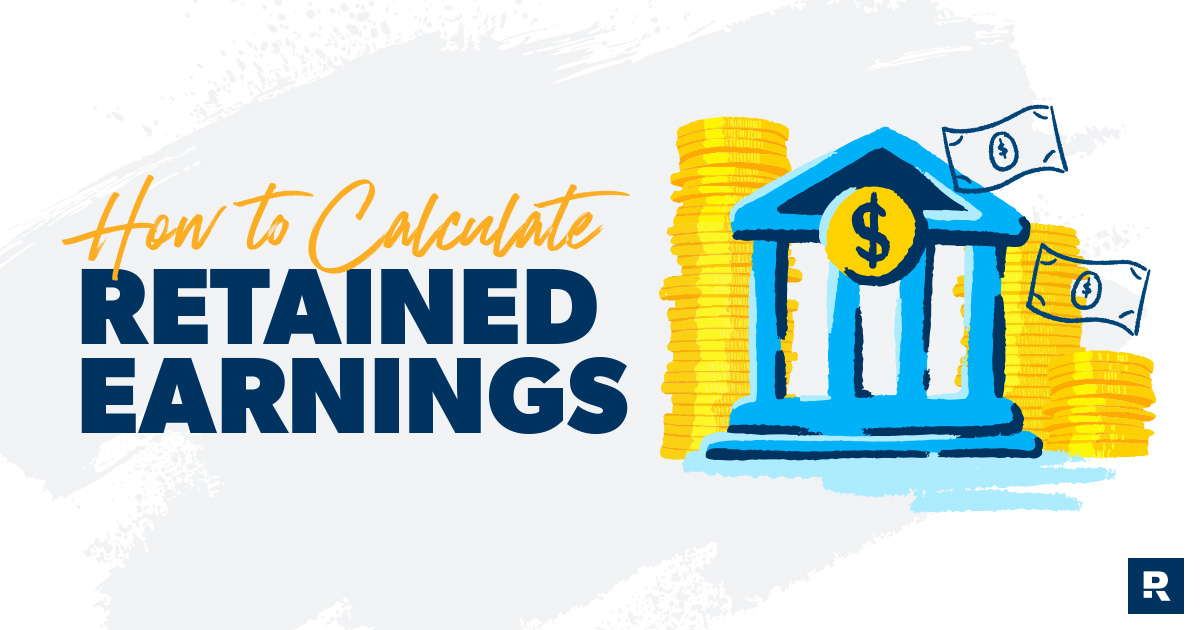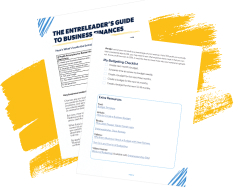
If you want to understand retained earnings and why they matter to your business, we’ve got a story for you directly from the trenches of the early days of Ramsey Solutions: On a busy Monday morning, Dave, a hard-charging business owner, sat in a meeting with his top leaders having a full-on pity party about how tight money was. Unless they collected fast from some of their customers, making payroll that week was going to be tough.
“We’ll never get over the top,” they whined. Enter Sharon Ramsey. As Dave’s wife and most trusted advisor, she attended leadership meetings in the early days.
“I know why you don’t have any money” she said. “You tell people to have a personal emergency fund, and yet you don’t have one in the business.”
When you can’t see the forest for the trees, it’s handy to have a lumberjack around. Of course, Sharon was right. They didn’t have retained earnings, and it was just common sense that they should. From that day forward, Dave faithfully held back a percentage of even the smallest net profit as retained earnings.
Over the months and years that followed, those earnings grew. In fact, retained earnings were key to the business “getting over the top” because they allowed Dave to build an emergency fund, seize unexpected business opportunities, and expand his products and services. Eventually Dave’s small company expanded into a national brand—all because Dave applied commonsense financial principles to his business. (Thank you, Sharon!)
The takeaway for you? Whatever stage of business you’re in, when you set aside and reinvest your business profits, you pave the path to financial stability, growth and financial peace. Who doesn’t want that?
To help you get started, let’s look at what retained earnings are and how to calculate them. Then we’ll show you how to set aside a portion of your profits, no matter your situation. Let’s dive in!
What Are Retained Earnings?
Generally, retained earnings are defined as the profits your company accumulates over time minus dividends paid to shareholders (if you have them). In EntreLeadership, we teach businesses to look at retained earnings like a business savings account used for three things: emergencies, investing into the business, and capitalizing on opportunities. It’s the money you save to ensure you have money for the future. And if you have business debt, you should also use retained earnings to pay that off. Retained earnings are usually listed in the equity section of your balance sheet.
Factors that influence your retained earnings include:
- Profitability: The higher your net profit, the more cash you have available for retained earnings.
- Company age: The more time you’ve had to save and grow your retained earnings, the higher your balance should be.
- Seasonality: If you run a seasonal business, you should follow the squirrel’s example—store up nuts during peak seasons to cover the lean ones. In other words, tuck away retained earnings aggressively when business is booming to cover the slower months.
- Dividend plan: The more you agree to pay to shareholders, the less you’ll retain for your business.
- Financial management: Without a solid money-management plan, it’s easy to fall prey to having more month than money—and no earnings to retain. But when you stay in control of your money, retained earnings become a natural part of your strategy.
Don't Let Your Numbers Intimidate You
With the EntreLeader’s Guide to Business Finances, you can grow your profits without debt—even if numbers aren’t your thing.
How Do You Calculate Retained Earnings?
Now that you know what they are, let’s talk about how to calculate retained earnings.
Retained Earnings Formula
Start with this retained earnings formula: RE = BP + NI (or – NL) – D
Before you have a traumatic flashback to high school algebra, here’s what those letters stand for and how they play out in a real example:
- RE is retained earnings.
- BP is beginning period retained earnings.
- NI is net income.
- NL is net loss.
- D is dividends (both cash and stock).
Say your retained earnings on your balance sheet at the beginning of a new accounting period is $100,000 (BP), your net income is $50,000 (NI), and you owe $5,000 (D) in dividends. Here’s how to get your new retained earnings:
- Add your beginning period retained earnings plus your net income (BP + NI).
$100,000 + $50,000 = $150,000 - Subtract your dividends (D).
$150,000 – $5,000 = $145,000
There you have it! Your new retained earnings (RE) are $145,000.
If you had a net loss of $30,000 (NL) instead of a net profit, with all other numbers the same, your calculations would look like this:
- Subtract your loss from your beginning period retained earnings (BP – NL).
$100,000 – $30,000 = $70,000 - Subtract your dividends (D).$70,000 – $5,000 = $65,000
Your new retained earnings (RE) are $65,000.
That’s not too scary! And as you stay up on your retained earnings, before you know it you’ll find yourself running a more stable, satisfying business.
Why Do Retained Earnings Matter to Business?
Businesses that aren’t run by commonsense, time-proven money principles are vulnerable to the whims of competitors, shifts in the economy, and every storm on the horizon. No, thank you. But when you stockpile earnings and manage your money well, you can live above panic and grow your business while others are shrinking.
Having this extra cash on hand also gives you the power to:
- Handle emergencies, economic uncertainty and cash-flow shifts with confidence—and less stress.
- Pay off debt to free your business up to grow.
- Capitalize on mind-blowing opportunities with cash, often for pennies on the dollar. As Dave says, “When opportunity knocks, if you keep some cash you can answer the door.”
- Invest in your business by hiring fantastic team members, launching new products, and trying new things.
It’s not just money in the bank. It’s the key to future success!
How Do I Save Retained Earnings?
So, where do you start on setting aside profits? We confess—that’s kind of a trick question. First, hold back enough money for you and family to live on (just a basic living wage—nothing crazy). Then:
- If your business is debt-free: Put about 50% of your monthly profits into retained earnings until you reach six months of operating capital. (This takes a while. Stay strong!) Also, create a budget line item for planned major purchases, upgrades and other pricey items you need to keep growing.
- If your business has debt: Put 15–20% of your monthly profits into retained earnings for your emergency fund. Apply the rest to pay off debt. Again, if you know a big expense is coming, add a line item for that too instead of pulling money from retained earnings.
Sound impossible? It’s 100% doable, we promise! In fact, thousands of small businesses have followed these EntreLeadership practices to become forces to be reckoned with.
Common Questions About Retained Earnings
1. What about saving for taxes?
Great question! The last thing you want is to get hit with extra penalties and fees because you didn’t pay your taxes. A good rule of thumb is to earmark about 25% of your net profit for taxes quarterly. But talk with a tax pro to work out your specific rate.
2. Where do you put the retained earnings you’re saving?
Keep your earnings in a high-yield savings account or money market account. You want them liquid so they’re available when you need them. If you have more than the FDIC-insured limit, diversify your funds with different banks to lower your risk of loss.
3. What do you do with your profit after you’ve set aside money for retained earnings, taxes and major purchases?
Enjoy the rest of your profit. That’s right. It’s yours to do what you want with!
Just like Dave developed a knack for retaining earnings, you can too. No matter how small you need to start or what challenge you’re in the middle of overcoming, “Do not despise these small beginnings” (Zechariah 4:10 NLT). Financial peace is on the other side.
Next Step: Save, Save, Save
Wise people save money. Learn more about retained earnings and pave a path to financial growth using EntreLeadership’s 6 Profit Principles and 4 Key Practices to Create Financial Peace in Your Business.
Check them out in the EntreLeader’s Guide to Business Finances.


